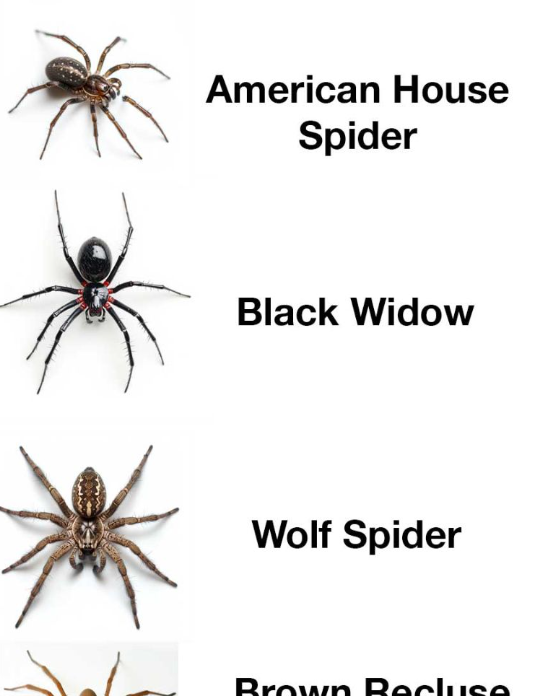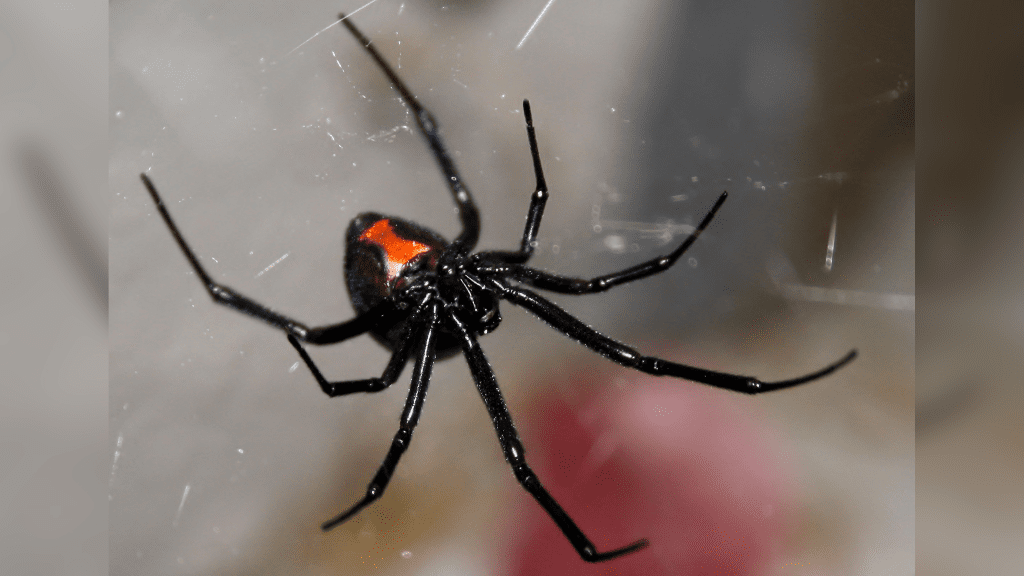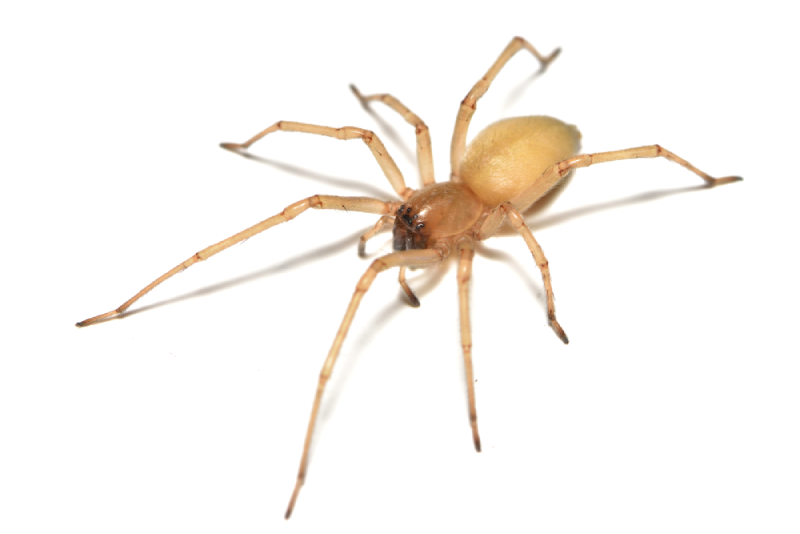Spiders are a common sight in homes worldwide. While they may evoke fear or discomfort, not all spiders are harmful. In fact, many species play a crucial role in controlling other pests, like insects. However, knowing how to identify and manage them can make your home feel more comfortable. In this article, we’ll dive into the nine most common house spiders and provide practical tips on how to handle them.
Overview of House Spider Habits

House spiders are more than just unwanted guests; they are seasonal invaders that often seek refuge inside homes during the warmer months. Their presence is typically tied to the availability of food and shelter. Most house spiders spin webs to capture prey, while some actively hunt for food. Understanding their habits helps homeowners prevent infestations and keep spiders at bay.
1. The American House Spider
The American house spider is one of the most recognizable spiders found indoors. These small arachnids have a rounded, brownish body with faint patterns. Female spiders tend to be larger, with an abdomen size of around 5-10 mm. You’ll often spot their tangled webs in dark corners, attics, and basements.
How to Deal with American House Spiders
- Clean Regularly: Keep your home tidy, particularly in places like basements and attics where they’re most common.
- Seal Cracks: Block their entry points by sealing gaps and cracks around windows and doors.
- Vacuum: Remove webs and spiders with a vacuum for quick, effective control.
2. The Common House Spider
Common house spiders are small, with brown or grayish bodies that allow them to blend in. These spiders prefer quiet, undisturbed areas and tend to build their webs in corners, behind furniture, or in other hard-to-reach places.
Managing Common House Spiders
- Declutter: Keeping your home free from clutter reduces hiding spots.
- Use Natural Repellents: Essential oils like peppermint or eucalyptus can help keep them away.
- Regular Cleaning: Remove webs and eggs with a broom or vacuum to reduce their numbers.
3. The Brown Recluse Spider
The brown recluse spider is infamous for its violin-shaped marking on its back. It has long, thin legs and ranges in color from light to dark brown. Found in dark, secluded areas like closets and basements, this spider can pose a health risk due to its venomous bite.
Safety Tips for Brown Recluse Spiders
- Call a Professional: If you suspect an infestation, don’t hesitate to call an exterminator.
- Wear Protective Gear: When cleaning areas where they might hide, wear gloves and long sleeves.
- Seek Medical Attention: In the event of a bite, seek medical help immediately.
4. The Black Widow Spider

The black widow is a dangerous spider easily identified by its glossy black body and distinctive red hourglass marking on the underside of its abdomen. These spiders prefer dark, cool areas such as garages, basements, and woodpiles.
Handling Black Widow Infestations
- Contact Pest Control: Given the dangers of their venomous bite, it’s best to leave black widow removal to the experts.
- Clear Clutter: Keeping storage areas tidy and wearing gloves when moving items will reduce the risk of encountering one.
5. The Wolf Spider
Wolf spiders are robust, large, and hairy. They are usually brown or gray, with stripes or markings on their backs. Unlike most spiders, wolf spiders are active hunters and do not spin webs.
Preventing Wolf Spider Infestations
- Yard Maintenance: Keep your yard clean, free of debris, and trim plants to reduce the chance of wolf spiders entering.
- Seal Entry Points: Ensure cracks around windows and doors are sealed.
- Vacuum Regularly: Wolf spiders often enter homes through ground-level areas, so regular vacuuming helps manage their presence indoors.
6. The Yellow Sac Spider

Yellow sac spiders are small with pale yellow or beige bodies. These nocturnal spiders create silk sacs to hide in during the day, usually found in the corners of walls or ceilings.
Controlling Yellow Sac Spiders
- Clean Thoroughly: Regular cleaning, especially in corners, can discourage them from settling.
- Use Sticky Traps: These traps are effective in catching aggressive yellow sac spiders.
- Seal Gaps: Block entry points around windows and doors to keep them out.
7. The Jumping Spider
Jumping spiders are small and often brightly colored. They have excellent vision and are known for their fast, jerky movements. Unlike most spiders, jumping spiders actively hunt their prey instead of spinning webs.
Dealing with Jumping Spiders
- Reduce Clutter: These spiders hide in cluttered areas, so regular tidying up can help.
- Check Entry Points: Make sure windows and doors are sealed to prevent them from entering your home.
- Dust and Vacuum Regularly: Maintaining cleanliness will reduce the chances of encountering one.
8. The Cellar Spider

Often called daddy-long-legs, cellar spiders have long, thin legs and tiny, elongated bodies. They are most often found in damp, dark areas like basements, cellars, or crawl spaces.
Managing Cellar Spiders
- Dehumidify: Keeping your basement dry and well-ventilated is key to discouraging cellar spiders.
- Sweep or Vacuum: Regular cleaning of corners will reduce their web-building opportunities.
- Seal Cracks: Ensure there are no openings through which these spiders can enter.
9. The Hobo Spider
Hobo spiders are brown and feature a herringbone pattern on their abdomens. They are often mistaken for brown recluse spiders, though they lack the violin-shaped marking. Hobo spiders create funnel-shaped webs in basements, crawl spaces, and near foundations.
Handling Hobo Spiders
- Reduce Clutter: Declutter basements and crawl spaces to remove potential hiding spots.
- Use Sticky Traps: These can be effective in capturing hobo spiders.
- Call a Professional: For significant infestations, professional pest control may be necessary.
Spiders may be creepy, but they don’t always have to be unwelcome. Identifying the types of spiders you’re dealing with and taking appropriate steps can help keep your home free of webs and minimize encounters. Whether it’s decluttering your basement, sealing cracks, or calling in professional help, each type of spider requires a unique approach. Keep your home clean, well-maintained, and properly sealed to stay ahead of any spider infestations.


